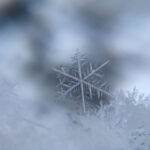If you’re into underwater photography and have been wondering why your photos don’t quite look like the pros’, the difference may very well be in your post-processing. Shooting underwater comes with some unique challenges, and post-processing can make all the difference between a dull, washed-out photo and one that is brilliant and alive. Check out the video below, where professional commercial photographer JP Danko gives step-by-step instructions on how to go from an image straight out of your camera to an image fit for pros:
Tips for Editing Underwater Photos
- Underwater photos almost always have very low contrast, so editing contrast back in is important.
- Light drops off very quickly in water, so you’ll need to bring down your blacks. This is easy to do in Photoshop or Lightroom.
- If you’re shooting near the surface, you’ll find that the highlights tend to be very bright–you’ll need to bring them down a bit as well.
- Underwater photos have a tendency to be rather dull and blue, and usually need a fair amount of added vibrance.
- Be prepared for a lot of noise in your underwater photos (possibly due to the particulates in the water). Danko likes to use Topaz DeNoise for cleaning up his photos, but you can also use Camera Raw or the general Adobe noise reduction filters.

Before Editing

After Editing
Try Danko’s technique on your own underwater photos, and let us know what you think!
Like This Article?
Don't Miss The Next One!
Join over 100,000 photographers of all experience levels who receive our free photography tips and articles to stay current:






Leave a Reply